When you’re feeling consumed by and overwhelmed with work, people around you will say things like:
“Sorry you’re feeling stressed out/burned out/frustrated with work. But that’s a good thing!”
Or:
“At least you’re busy!”
In other words, if you’re not overworked, then your business must be in danger of closing down.
You and I both know that’s not the case. There is a reason why your work days end up being much longer than you expect them to be and why you can’t seem to make more money despite putting in more time.
What it boils down to is this:
You can’t be productive or work efficiently if you start too many tasks at once, if you don’t close down projects completely or if you don’t resolve client issues and concerns in a timely fashion.
This is why your workflow needs more structure in terms of opening and closing loops.
Today, I’m going to talk about what it means to “close the loop”, where these loops exist in your workflow and what sort of loop-closing strategies you can use to get more done.
What Does It Mean to Close the Loop?
When it comes to running a WordPress business, it’s easy to confuse 60-hour mind-numbing workweeks and a lack of time outside them with “success”. That’s what we’ve been conditioned to believe and it doesn’t help that many of the people around us support this theory.
But there’s a difference between being busy and drowning in work. The key difference between the two is:
Being Busy = Having a full plate but still having the freedom to walk away when the reasonably lengthed workday is done. You dedicate the rest of the time to living life the way you want.
Drowning = There’s a never-ending string of tasks and communications sitting on your “desk”, waiting for you to address them. This often happens because you have too many open loops.
What does this mean exactly? I’ll show you:
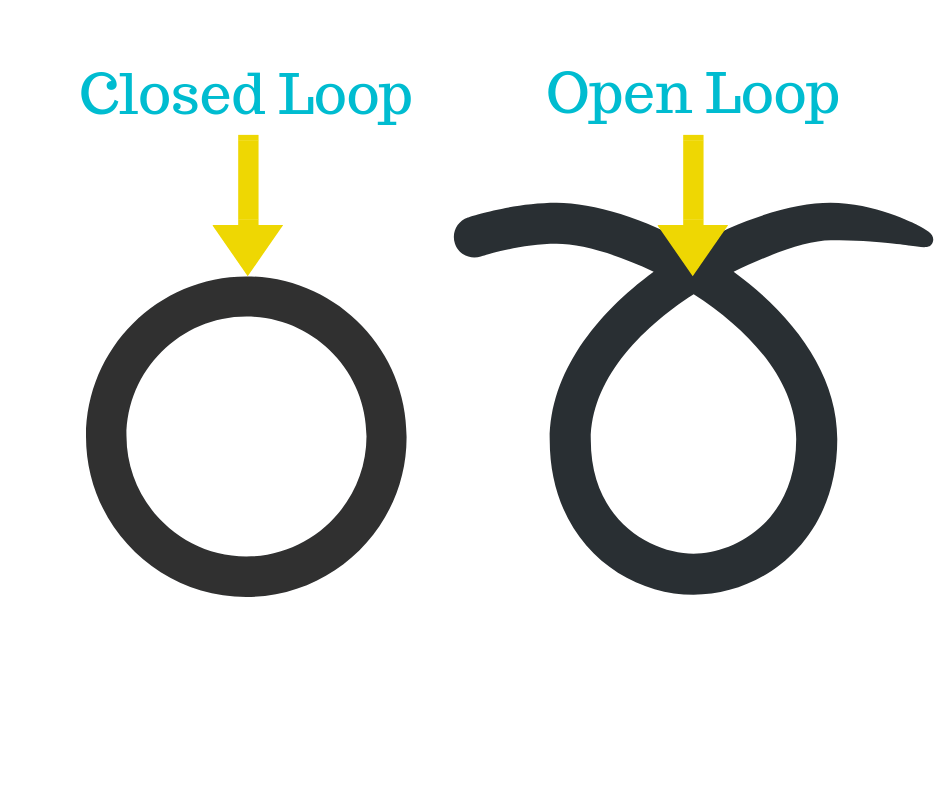
Imagine that these two loops represent the cycle of a WordPress development project. The arrow indicates where the starting and stopping points occur in the loop.
In the case of the closed loop:
- You begin your project at the arrow.
- Work your way around the loop.
- Come to a dead stop at the end of the project.
You can do this when all tasks are completed, the client has a website they’re fully satisfied with and you’ve received payment. In other words, you confidently close the loop on the job so you can move onto the next project with a clear mind.
Also, notice how the closed loop brings you full circle. There are no early stops or late deliveries. Everything has gone to plan and you’ve completed the task in full.
In the case of the open loop:
- You begin your project at the arrow.
- Work your way around the loop.
- Come to what should be the stopping point…
- And spend the next month going in and fixing up elements of the design client’s not totally happy with, answering daily calls from them to communicate progress or answer questions and so on.
In sum: with open loop projects, you blow past the end date because you have not effectively gained closure on the job nor has your client. Or, you never reach the end of the project or task. Someone disappears. You lose track of it because you’re bogged down in other work. Or you drag your feet on a task you know you have to get to but are dreading.
As you can imagine, that open loop can continue on for months before frustration and exhaustion lead you to close the job, but it’s done far too hastily or messily. You might feel better having closed the action steps, but that doesn’t free you from the burden of thinking about what could have been done better.
Close the Loop and Get More Done with the Time You Have.
In the example above, I’ve focused on the development life cycle. But there are a variety of ways in which loops are left open in your business. You might not realise they’re having an impact on your productivity or profitability, but I assure you they are. When you leave something open-ended, that lack of resolution will eat away at your peace of mind and your time.
So, let’s zero in on these common trouble areas and how you can more effectively plan to close the loop on each of them:
First… Reconfigure Your Mindset.

If you can survive without it, be ruthless and remove it from consideration before you ever open the loop.
If you have a list of project ideas you’ve noted down and tasks you’ve added to it without setting a due date, start striking them off of your list. If they’re just something you thought about once a few months back, but know you don’t have time to tackle them or that there won’t be much of an ROI, don’t let them take up space on your list or in your brain.
Focus on the MUST (and perhaps a SHOULD or two) so you can get more done.
Close the Loop on WordPress Projects.
The first loop to learn is how to effectively close up a WordPress project. Here is a sample plan to tie up loose ends and give your project closure:
- Run through your checklists before you deliver a job. Then, run through those checklists once more.
- Host a closing call with your client.
- When necessary, provide one-on-one training with them or send a video of you explaining their new site.
- Send the final invoice and collect the payment.
- Conduct a post-mortem internally. Were there any problems or hold ups? What system can you put in place to avoid this in the future? Adjust your process based on the assessment and provide training to your team when needed.
- Send your client a request for feedback or ask for a testimonial. Confirm receipt, thank them for it, document and use for internal improvements.
- Clean up the project folder and move it to your archives for post-project decluttering.
- If there’s a case study to be made from this, add it to your list of marketing tasks.
See how this works? Your goal is to close up anything that might leave you or your clients wanting to look backwards.
One other thing to keep in mind is how your own perfectionism might prohibit you from ever reaching the endpoint.
As Simon Kelly always says:

In other words, don’t let your own perfectionism get in the way of shipping a job or closing a task. Sure, you want to do a great job for your clients… but you also want to get paid and move on to the next one, right? In order to keep moving forward, you have to take your ego out of it. Get it done and then revise later if you have to.
Suggested Tool
To efficiently get through a job and close it up airtight, use a project management tool like Asana.
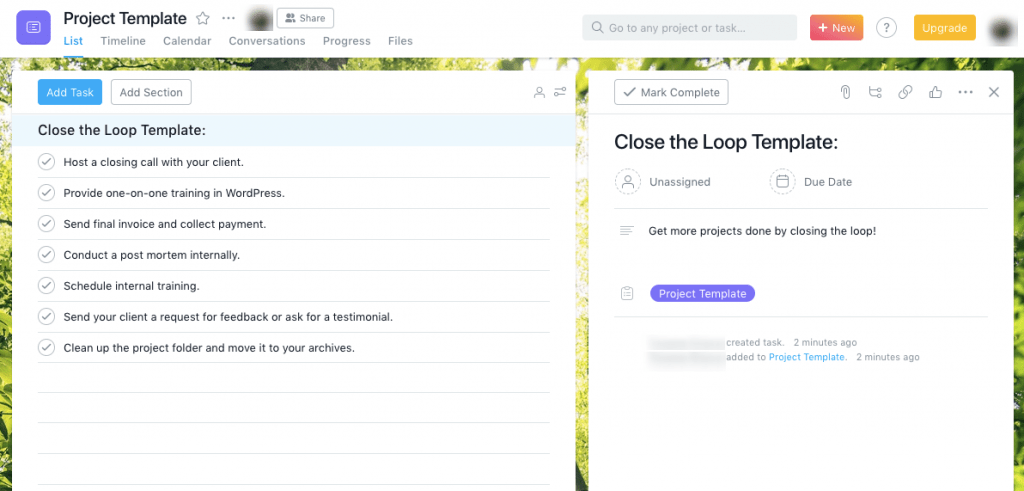
Close the Loop on Client Communications.
- Provide clients with one communication channel. Website clients should go through project management software. Maintenance clients should go through a support portal. And so on.
- Provide prospects with one dedicated channel, too.
- Do not give out your phone number. If it’s urgent, they can reach you through your chat tool.
- Always schedule a set amount of time for phone calls and never let the discussion spill over.
- If you have any discussions by phone, either record them or follow up with an email to confirm what was discussed. This way, there can’t be any disputes later on if the client doesn’t believe an issue was resolved or a plan of action agreed to.
- View and respond to messages (email and phone) at committed times during the day.
- Create a system of folders to organise communications: by client, project type, message type (e.g. prospect, proposal, onboarding, support), urgency, etc.
Suggested Tool
Here are some tools I would suggest based on the tips above:- Project management: Basecamp is great for agencies; Trello for small businesses
- Support portal: Run this from your WordPress site
- Chat: Slack or Skype
- Communication pause: Boomerang for Gmail or simply silence your smartphone
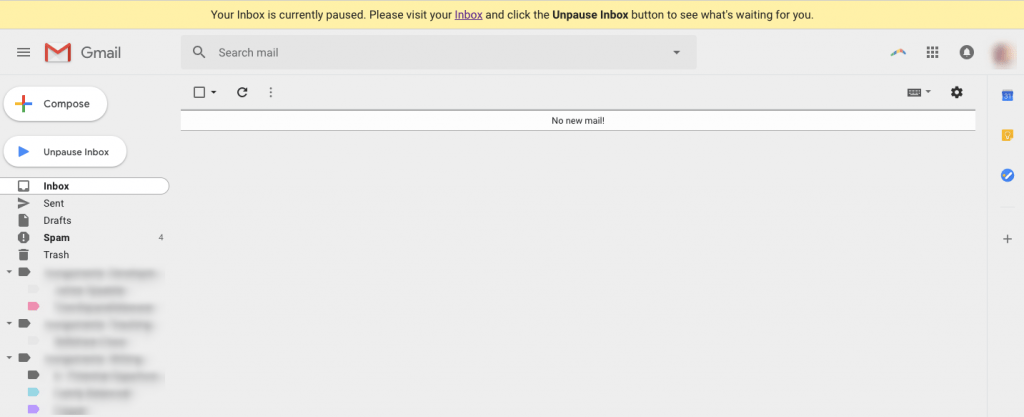
One other thing I would suggest is to hire support staff for this purpose. Unless you’re pitching and onboarding a client, how much communication do you actually need to handle on your own? In all honesty, most of this can be delegated to someone else, so you can focus on more pertinent matters that need to get done.
Close the Loop on Business-Related Tasks.
Your business deserves as much love and attention as the work you do for paying clients. But does that mean your focus should be split between an overwhelming amount of tasks that COULD be good for your business, but that you probably don’t have time for? If you want to get stuff done, then the answer to that is:
No.

Let’s talk about how to properly manage the vision you have for your business and the actions to support it.
First, put everything you have on your plate into your project management tool. Then, I want you to play a little game called “Do, Defer, Delete, Delegate”.
Go through each task, one by one.
- Identify tasks that are worth putting other tasks aside for and add them to the DO list.
- Identify tasks that must get done, but aren’t as time sensitive. Add them to the DEFER list with enough time to spare before the deadline.
- Identify tasks that you want to get done, but you don’t have time or any interest in. Decide who to DELEGATE to and reassign.
- Identify tasks that have been lying around for awhile and have no real value for your business. DELETE them.
Then, schedule a weekly review of your workload to repeat this process.
Never allow yourself to add tasks with no clear end in sight or that make no solid contribution to your business improvement efforts. Then, decide how to take action on the rest and create a reasonable schedule to complete each task. You want to close the loop on each of these, but you don’t want to burn yourself out doing so.
Suggested Tool
Your project management tool will, again, play a key role in keeping you on track. Something else to consider when it comes to closing the loop on business management tasks is automation.
Automation is a form of delegation when you think about it. Rather than write onboarding emails from scratch, balance your monthly profits and losses or issue invoices to clients and program your software to handle as much of it as possible.
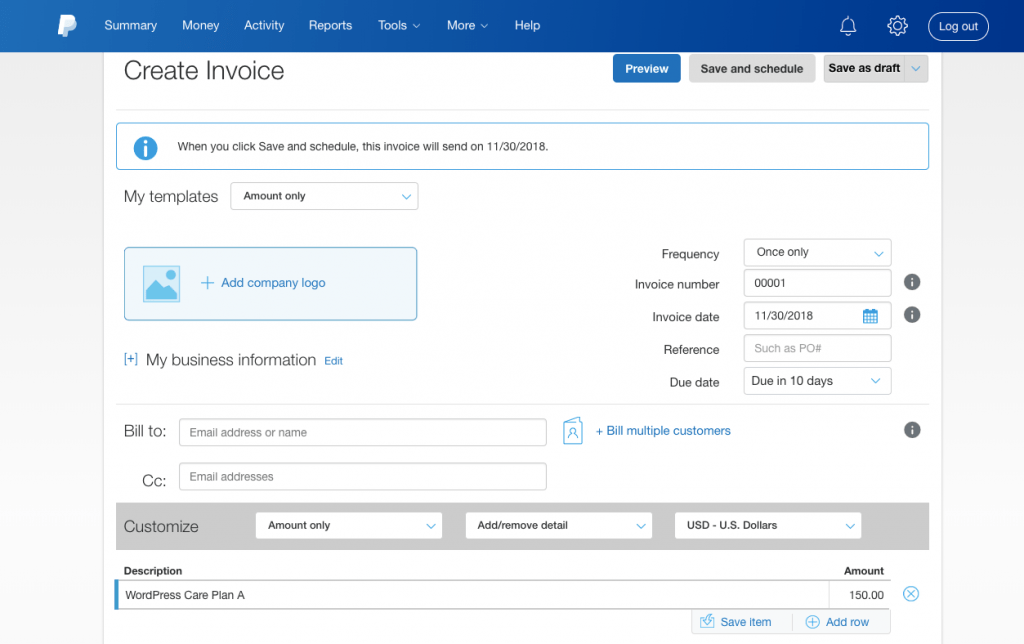
You might have to DO all these things to run your business, but no one said they had to be executed by you every single time.
Close the Loop on Marketing Opportunities
Marketing is a cyclical matter, so many of the tasks may seem to have an open end. But that doesn’t mean you shouldn’t have processes that give you closure on each campaign or piece of collateral you spend time on.
Here are some ideas for creating a closed loop so that you may more effectively put aside one marketing task and focus on the next.
Create a process for content marketing:
- Write, proofread and finalise content.
- Publish.
- Promote on social media and via newsletters.
- Monitor for engagement.
- Review the metrics.
Create a process for social media marketing:
- Create a schedule of posts for each social media channel.
- Automate scheduling using a tool such as Buffer or Hootsuite.
- Delegate management of monitoring and responses to a dedicated team member.
- Review the metrics.
Create a process for email marketing:
- Create a schedule for your newsletter.
- Automate scheduling.
- Delegate management of email marketing and responses to a dedicated team member.
- Review the metrics.
The same should be done for any other marketing efforts you’re involved in:
- Lead magnets (e.g. ebook, checklist, demo)
- PPC ad campaigns
- Webinars
The goal is to have something completed that can be shared with your audience… not 20 half-completed marketing opportunities; none of which are generating you revenue. You also need to monitor the results to make sure these strategies are working, because if they aren't – scrap them.
These processes will enable you to close up each campaign before moving on to the next.
Suggested Tool
The CoSchedule plugin in WordPress is something you can use to limit how many marketing campaigns you’re working on.
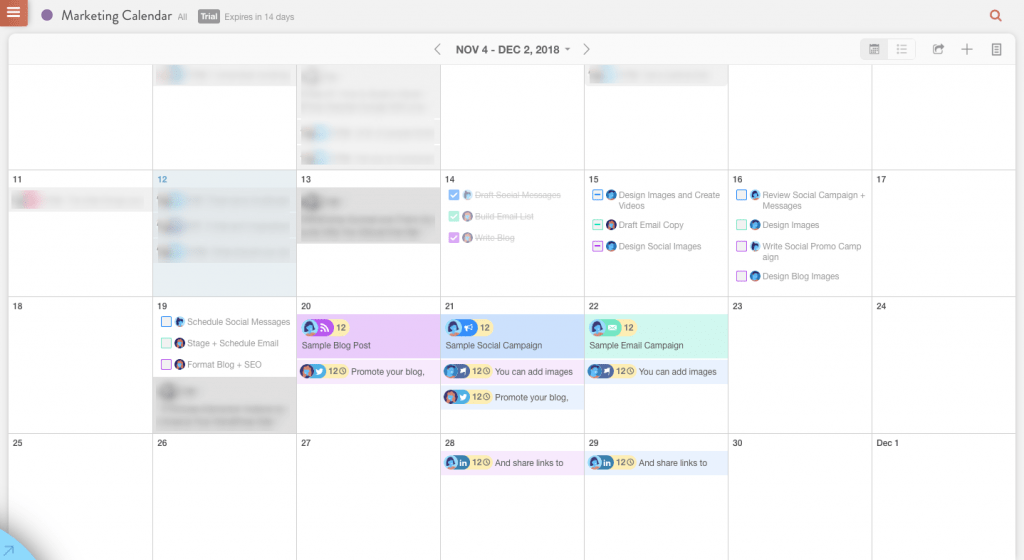
It’s essentially an editorial and marketing calendar that provides an easy way to visualise everything you have in the pipeline. If you find yourself looking too far in advance at webinars you’ve casually thought of hosting, let this tool pull back the reins and help you focus on what needs to be done now.
Close the Loop on Sales Opportunities.
Sales is another one of those business-boosting activities that happens in a cyclical way. That said, you don’t want the song-and-dance you do with prospects to go on forever.
To keep the sales cycle within a closed loop, consider the following:
- Have a plan for what you do with leads when you receive them (e.g. email message, schedule a consultation, etc.).
- Use a CRM to collect leads and automatically add them to your sales funnel.
- Develop a schedule for email messages (or phone calls) to connect with leads and foster a relationship with them.
- Use the anti-follow-up to win more proposals.
- Schedule time to close the sale.
- Follow up until you close (within a reasonable timeframe) or they unsubscribe and respect the unsubscribe.
Suggested Tool
So much of this can be automated, from the collection of leads to the emails you send. Just make sure you have the right CRM software in place to manage the full pipeline. Hubspot CRM is one I like to use.
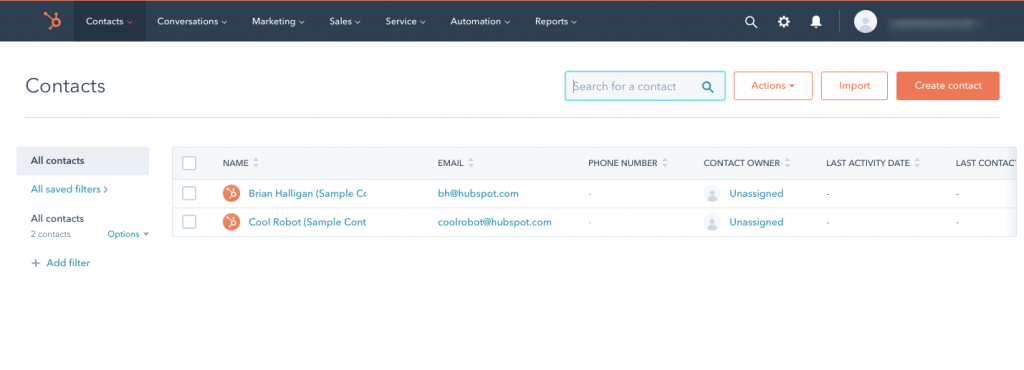
Whichever software you choose, make sure it connects to:
- Your WordPress website (to capture lead details)
- Email marketing software such as ActiveCampaign (to email your segmented leads from)
Don’t forget to create a new project in Asana to manage the sales pipeline and all activities surrounding it. This way, you won’t be inclined to bite off more than you can chew. You’ll make time for the sales activities you can handle, delegate the rest and then put aside or delete the others.
Close Your Workday.
- Check your inbox an hour before close to make sure there were no fires missed (DO). All else can wait until the next day (DEFER).
- Review the day’s tasks and confirm nothing was skipped or left incomplete.
- Plan out your tomorrow today. Review and adjust the list of tasks and aim to eat the frog first.
- Clean up your digital and physical workspaces.
- Set a time for your workday to end and commit to it.
Wrap-Up
It’s okay to feel busy, especially if you enjoy the rush of always having something to work on. But remember that the success of your business doesn’t hinge on how many new clients you pick up, tasks you take ownership of or marketing opportunities that present themselves to you.
If you don’t have a way to close the loop on tasks, projects or communications, you’ll always feel a sense of incompleteness. The same will happen if you get into the habit of opening too many loops at a time or the wrong kinds of loops altogether.
That’s incredibly frustrating. It’s also quite harmful as it compels you to do too much and, again, perpetuate this cycle of never getting anything done even though, by all appearances, your business seems to be thriving.

Just keep in mind that this responsibility ultimately falls on you. Clients can’t be expected to know when you’re overworked or when you’ve overcommitted to projects. If you agree to take on more work, they will gladly hand it over.
So, you need to be more mindful of your limits as well as what you MUST handle. If you can make smarter choices regarding that, you won’t have to work as much, but you’ll get more work done when you do.

